Related Research Articles

The Mumbai High Field, formerly called the Bombay High Field, is an offshore oilfield 176 km (109 mi) off the west coast of Mumbai, in Gulf of Cambay region of India, in about 75 m (246 ft) of water. The oil operations are run by India's Oil and Natural Gas Corporation (ONGC).
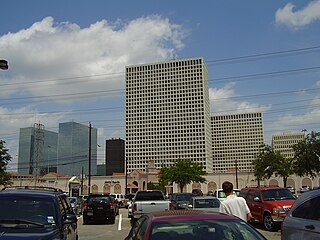
Transocean Ltd. is an American drilling company. It is the world's largest offshore drilling contractor based on revenue and is based in Vernier, Switzerland. The company has offices in 20 countries, including Canada, the United States, Norway, United Kingdom, India, Brazil, Singapore, Indonesia, and Malaysia.
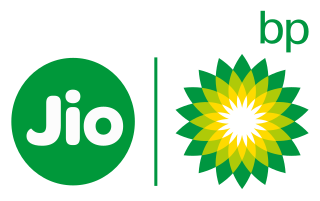
Jio-bp, or legally Reliance BP Mobility Limited, is an Indian oil and gas company, owned by Mukesh Ambani of Reliance Industries Limited (RIL). It is based in Navi Mumbai, Maharashtra, India. It is vertically integrated and is involved in hydrocarbon exploration, production, refining and also has interests in the downstream business and operates over 1700 Retail Fuel Outlets in India. It also operates the largest oil refinery in the world, situated in Jamnagar.
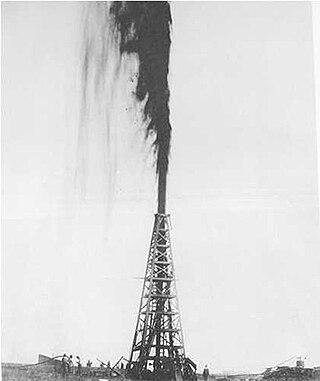
A blowout is the uncontrolled release of crude oil and/or natural gas from an oil well or gas well after pressure control systems have failed. Modern wells have blowout preventers intended to prevent such an occurrence. An accidental spark during a blowout can lead to a catastrophic oil or gas fire.

The Oil and Natural Gas Corporation Limited (ONGC) is an Indian central public sector undertaking under the ownership of Ministry of Petroleum and Natural Gas, Government of India. The company is headquartered in Delhi. ONGC was founded on 14 August 1956 by the Government of India. It is the largest government-owned-oil and gas explorer and producer in the country and produces around 70 percent of India's domestic production of crude oil and around 84 percent of natural gas. ONGC is vertically integrated across the entire oil and gas industry. In November 2010, the Government of India conferred the Maharatna status to ONGC.

Deepwater Horizon was an ultra-deepwater, dynamically positioned, semi-submersible offshore drilling rig owned by Transocean and operated by the BP company. On April 20, 2010, while drilling in the Gulf of Mexico at the Macondo Prospect, a blowout caused an explosion on the rig that killed 11 crewmen and ignited a fireball visible from 40 miles (64 km) away. The fire was inextinguishable and, two days later, on April 22, the Horizon collapsed, leaving the well gushing at the seabed and becoming the largest marine oil spill in history.

Aban Offshore is Indian multinational offshore drilling services provider headquartered in Chennai. Its services are mainly used by oil companies, especially for ONGC. The company listed on the Bombay Stock Exchange.

Krishna Godavari Basin is a peri-cratonic passive margin basin in India. It is spread across more than 50,000 square kilometres in the Krishna River and Godavari River basins in Andhra Pradesh. The site is known for the D-6 block where Reliance Industries discovered the biggest natural gas reserves in India in 2003.

On April 20, 2010, an explosion and fire occurred on the Deepwater Horizon semi-submersible mobile offshore drilling unit, which was owned and operated by Transocean and drilling for BP in the Macondo Prospect oil field about 40 miles (64 km) southeast off the Louisiana coast. The explosion and subsequent fire resulted in the sinking of the Deepwater Horizon and the deaths of 11 workers; 17 others were injured. The same blowout that caused the explosion also caused an oil well fire and a massive offshore oil spill in the Gulf of Mexico, considered the largest accidental marine oil spill in the world, and the largest environmental disaster in United States history.
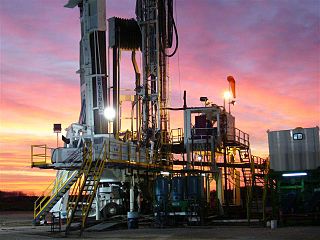
Oil well control is the management of the dangerous effects caused by the unexpected release of formation fluid, such as natural gas and/or crude oil, upon surface equipment of oil or gas drilling rigs and escaping into the atmosphere. Technically, oil well control involves preventing the formation gas or fluid (hydrocarbons), usually referred to as kick, from entering into the wellbore during drilling or well interventions.
The Directorate General of Hydrocarbon (DGH) is the Indian governmental regulatory body under the Ministry of Petroleum and Natural Gas.
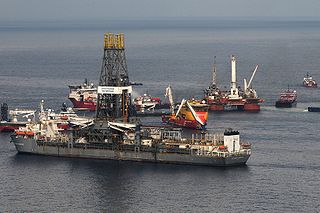
The Deepwater Horizon investigation included several investigations and commissions, among others reports by National Incident Commander Thad Allen, United States Coast Guard, National Commission on the BP Deepwater Horizon Oil Spill and Offshore Drilling, Bureau of Ocean Energy Management, Regulation and Enforcement, National Academy of Engineering, National Research Council, Government Accountability Office, National Oil Spill Commission, and Chemical Safety and Hazard Investigation Board.
Kotipalli railway station, located in the Indian state of Andhra Pradesh, serves Kotipalli in East Godavari district.
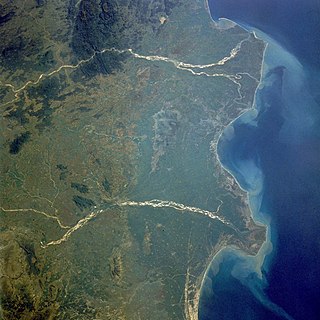
Pasarlapudi is the river delta of the Godavari River at the Bay of Bengal in southeastern India. It is located in the Dr. B.R. Ambedkar Konaseema district of Andhra Pradesh state, in the South India Region.
The Kaveri delta coal-bed methane extraction project is a series of projects to extract methane gas and hydrocarbon from coal-bed by using hydraulic fracturing in the Kaveri river basin in Tamil Nadu, India. The extraction projects faced series of opposition from the farmers, environmentalists, and experts as exploration areas covering Nagapattinam, Thanjavur and Thiruvarur districts which are the major rice cultivating area of Tamil Nadu.
On 27 June 2014 a massive fire broke out following a blast in Gas Authority of India Limited (GAIL) 18" size underground gas Pipeline at Nagaram in East Godavari district of Andhra Pradesh, India. The accident took place near Tatipaka refinery of Oil and Natural Gas Corporation (ONGC), about 180 km from state capital Vijayawada.
National Highway 216 is a National Highway in the Indian state of Andhra Pradesh. The former highways of NH 214 and 214A were merged and renumbered as NH 216. It starts from NH 16 junction at Kattipudi and passes through Kakinada, Amalapuram, Digamarru (Palakollu), Narasapuram, Machilipatnam, Repalle, Cherukupalle, Bapatla, Chirala before it junctions NH 16 again at Ongole. Visakhapatnam–Kakinada Petro Chemical Corridor, is a proposed project along the highway.
The 2020 Assam gas and oil leak, also referred as the Baghjan gas leak, was a blowout and methane leak that happened in Oil India Limited's Baghjan Oilfield in Tinsukia district, Assam, India on 27 May 2020. The blowout occurred at Well No. 5 in the Baghjan Oil Field, resulting in a leak of natural gas. The leaking well subsequently caught fire on 9 June 2020, and resulted in three deaths (Officially), large-scale local evacuations, and environmental damage to the nearby Dibru-Saikhowa National Park and Maguri-Motapung Wetland.
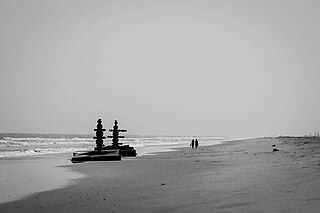
Odalarevu is a village located in the Allavaram mandal, Dr. B. R. Ambedkar Konaseema district of the Indian state of Andhra Pradesh. Situated in the coastal region of the state, the village is bounded by the Godavari River on one side and the Bay of Bengal on the other.
Amalapuram railway station is a railway station currently under construction located in Amalapuram, Dr. B.R. Ambedkar Konaseema district, Andhra Pradesh, India. It will serve as a vital link connecting the cities and villages between Narasapuram and Kakinada once completed and it is owned by Indian Railways.
References
- ↑ "Friday's blowout not an isolated case". The Hindu. Retrieved 28 June 2014.
- ↑ "A blast off the top". Down to Earth.
- ↑ "Raging rig". Indian Environmental Portal.
- ↑ Menon, Amarnath K. "Krishna-Godavari basin blaze under control, but damage to ONGC's image isn't". India Today. Retrieved 3 February 2020.